Cats: Books on single breeds
If you want to buy a book, clicking on the book
cover will take you directly to that book on the Amazon.co.uk web site.
See also:
 Cats: General Cats: General
 Cats: Behaviour Cats: Behaviour
 Cats: Health
and nutrition Cats: Health
and nutrition
 Cats: Fiction
dealing with cats Cats: Fiction
dealing with cats
 Click
here to see some stamps with cats on Click
here to see some stamps with cats on
 |
|
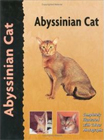
Click on the cover above
to go to this book
at Amazon.co.uk
|

Abyssinian Cat (Pet Love) [Hardcover]
Virginia N. Tidwell
Interpet Publishing (30 Jun 2003)
ISBN-10: 1842860453
ISBN-13: 978-1842860458
Abyssinian cats look like cats in Ancient Egyptian paintings, very elegant, with big ears, in some ways like a Siamese. They have other similarities with Siamese and Burmese cats, being people-oriented and companionable, yet also a little bossy, and not always wanting to be petted. They can develop strong bonds with their humans, and are very good at expressing their needs. These cats like exploring, and enjoy venturing onto high places, like shelves. They benefit from an enclosed area in the garden or apartment balcony, if you don't want them to be outdoor cats, and the enclosed space can include tree trunks for them to climb on, because they do like heights. They also love water, and are adept at catching goldfish!
Virginia N Tidwell's book explains the history of the breed, and gives advice on buying an Abyssinian, feeding, grooming, basic safety precautions, behaviour, training and health, including eye problems, and breeding. There are also tips for people who want to exhibit their cats.
 Top
of page Top
of page
|
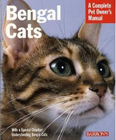
Click on the cover above
to go to this book
at Amazon.co.uk
|

Bengal Cats: A Complete Pet Owner's Manual (Barron's Complete Pet Owner's Manuals)
Dan Rice Barron's Educational Series; 2nd Revised edition edition (29 April 2005)
ISBN-10: 0764128620
ISBN-13: 978-0764128622
Bengal cats are hybrids which have descended from crosses between wild
leopard cats from Southeast Asia, and domestic cats. Early attempts to
domesticate leopard cat kittens proved to be a failure, while bringing
in domestic cat blood meant that the new breed was easier to house train,
and friendlier with people. Bengal cats are a large breed which have spectacular
coats with leopard - like patterns, and they have been carefully bred
to have nice temperaments - less wary and more outgoing than their wild
ancestors..They are very active and intelligent cats, and need an enriched
environment. Many Bengal cats are kept indoors, because they are such
special cats. Indoor Bengal cats need games with their owners, and places
to climb, so that they don't get bored - an enclosed area in the garden,
or a fenced in apartment balcony help alleviate their boredom, especially
if they have high places to sit on, and access to water, which they love.
The markings of a Bengal cat change as the kitten becomes an adult, and
the pattern can become muted, only to reappear. Bengal cats can be expensive,
so it's worth checking at the breeder's that both parents are from the
Bengal breed, and learning as much about their ancestory and links with
wild leopard cats as you can.
Dan Rice is a US vet who has written this concise guide to the breed.
It's a very good introduction to Bengal cats, and packs in a lot of information,
though it is rather short. There's help with health problems that the
breed is prone to, and the book gives a very good idea of what it's like
to share a house with one of these marvellous cats. The illustrations
are also a treat for all cat lovers, and show what a striking breed this
is.
 Top
of page Top
of page
|
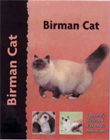
Click on the cover above
to go to this book
at Amazon.co.uk
|

Birman Cat (Pet Love) [Hardcover]
Dennis Kelsey-Wood
Interpet Publishing; 1st edition (20 Nov 2001)
ISBN-10: 1842860380
ISBN-13: 978-1842860380
Birman cats are medium-sized, and have many of the advantages of Persians such as a tranquil nature and long fur, without their distressing tendency to mat. Birman cats' fur isn't as dense as that of Persian cats, and they have Siamese-type markings, with white feet, and strikingly blue eyes. They can be very playful cats, but are content to watch the world much of the time. This tranquility means that they are suited for people who work at home, since they are less likely to help you on the computer, or get up to other mischief, in the way that a Bengal or Siamese might.
Kelsey-Wood's guide to the breed covers its history, personality, and care, such as feeding and grooming. It's well illustrated, and clearly written. As with most breed books, much of the advice is general to all cats, but this book does give readers good insights into this lovely breed.
 Top
of page Top
of page
|

Click on the cover above
to go to this book
at Amazon.co.uk
|

Burmese Cat (Pet Love)
Dennis Kelsey-Wood
Interpet Publishing
ISBN: 1842860100
Burmese cats have many similarities with Siamese cats, and those found
in Europe and the US have some Siamese blood. Their ears are smaller than
those of Siamese cats, though, like Siamese, Burmese are very elegant
cats. They are not aloof, tending to form strong bonds with their owners.
They are sometimes kept as indoor cats, and do need entertainment if they
are kept indoors, and benefit from an enclosed area in the garden or apartment
balcony. They are intelligent, and like company, so make good companions
for people who are at home in the day, though they may come and sit on
your work table, to 'help' you!
This is an up-to-date account account of the breed, which has useful
help with general care, as well some good illustrations. There's also
an interesting account of the history of the breed.
 Top
of page Top
of page
|

Click on the cover above
to go to this book
at Amazon.co.uk
|

That Yankee Cat: The Maine Coon (New, Revised)
Marilis Hornidge
Tilbury House Publisher
ISBN: 088448243X
Maine Coon cats are magnificent beasts, and were developed in Maine,
America. They have long, thick, fur and can tolerate the cold well. Some
individuals have tufts on their ears so they look like lynxes. They come
in a range of colours, and are large cats, but not giants - they just
look even bigger than they are because of their shaggy coats. Maine Coon
cats were allowed to develop naturally as a breed, and matings planned
by humans are fairly recent compared to many breeds, so recent natural
selection means that they are relatively tough and healthy cats. This
breed doesn't really like to be confined indoors, and prefers to be patrolling
the garden, investigating mouseholes and warning the local mutts to stay
away. They can get on very well with dogs in the same household, and are
also robust enough to make good family cats.
This book is a delight for cat enthusiasts - you don't have to be a Maine
Coon owner to enjoy the stories of the breed. There is also advice on
general care and breeding of Maine Coons. There's enough in this book
to interest discerning Maine Coon fans as well as newcomers to the breed.
 Top
of page Top
of page
|
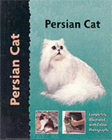
Click on the cover above
to go to this book
at Amazon.co.uk
|

Persian Cat
Thomas Critchley
Interpet Publishing
ISBN 1-842860-07-0
This excellent book about Persian cats with some beautiful colour photographs
would be useful for new and experienced owners, as well as those who wish
to breed and show Persians. It covers all the usual information you’d
find in a cat book, such as health care and feeding, as well as more Persian
related advice, such as grooming, and each chapter features highlighted
hints and related points of interest, which is a nice touch. As an owner
of Persians I was pleased to see a whole chapter devoted to the all-important
grooming, which provides sensible advice on the right sort of grooming
equipment to choose, as well as how to bath your cat. The chapter about
the origins of the Persian cat is interesting and there is an easy to
follow guide to the different coat colours and patterns accompanied by
some stunning photographs. I would have liked to see a bit more about
the intrinsic nature of the Persian cat, but it is still an invaluable
addition to a breed specific library.
Review by Gillian Harvey
 Top
of page Top
of page
|
.jpg)
Click on the cover above
to go to this book
at Amazon.co.uk
|

Persian Cats (Complete Pet Owner's Manual) [Paperback]
Ulrike Meuller
Publisher: Barron's Educational Series;
2nd Revised edition edition (Oct 2004) Language English
ISBN-10: 9780764129193
ISBN-13: 978-0764129193
ASIN: 0764129198
Product Dimensions
Persian cats are very popular. They are gentle cats which like company,
but they aren't usually pushy when they want affection. They are usually
much more calm and relaxed with both dogs and children than most other
breeds. They aren't very noisy, and are less likely to knock objects off
high shelves than many breeds. Persians also come in some wonderful colours,
including tabbies and Himalayans, as well as the more familiar solid silver
or white cats, which appear in chocolate box images. What are the downsides
of this lovely breed? They do need a lot of grooming, and will readily
mat if they aren't groomed regularly. They can pick up all sorts of debris
if they are outdoor cats, though this is one breed which seems perfectly
content to live indoors, with a cat run to be able to take the sun. Persians
are also less able to defend themselves in cat fights compared to the
average moggy, or a more robust breed like a Maine Coon or even a British
Short Hair, so it's kinder to give them some protection if you live in
an area with a high cat population density. Some people go so far as to
fence their whole gardens with a mesh roof, to keep other cats out.
This book is an excellent introduction to Persian cats. It's a very
good guide for novices, and there is a lot of good advice on general care,
including grooming and health care. It's is a little short for people
who already have experience of Persians, but it's an inexpensive book.
 Top
of page Top
of page
|

Click on the cover above
to go to this book
at Amazon.co.uk
|

Persian Cats
Marianne Mays
Kingdom Books
ISBN 185279017 2
This book begins with a short history and development of the Persian
cat, and gives advice on how to choose a kitten. It then goes on to give
advice on general care, equipment and feeding, which could apply to any
cat, not just Persians, but would be of use to a completely novice cat
owner. The section on ailments, again does not pertain to Persians in
particular, and rather annoyingly, it is not in alphabetical order. The
section on grooming is detailed and provides useful advice on preparing
a cat for a show. There are also sections on showing, breeding and the
different colour varieties. On the whole this is quite a useful book,
but I think it missed an opportunity to include more about particular
aspects of the character, behaviour and specific health problems of the
Persian cat.
 Top
of page Top
of page
|
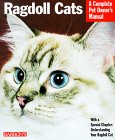
Click on the cover above
to go to this book
at Amazon.co.uk
|

Ragdoll Cats (A Complete Pet Owner's Manual)
K.L. Davis
Barron's Educational Series
ISBN: 0764107321
Ragdoll cats are a large breed which was developed from white cats with
long hair and Siamese markings. They come in a range of colours, and have
blue eyes. They are gentle, affectionate cats, which are robust enough
to be good family cats, and they tend not to climb as much as many breeds,
so are less likely to get into mischief. They don't need as much grooming
as Persian cats, despite their long fur, and they aren't very noisy. The
breed is very relaxed when handled, and tends not to defend itself. Many
people keep Ragdoll cats as indoor cats on the grounds that they can't
easily defend themselves against local moggies, though they benefit from
an enclosed area in the garden or apartment balcony, if they are kept
as indoor cats.
This book is a short introduction to the breed, which has some nice pictures.
It's clearly written and up-to-date, and is an excellent introduction
for novices, especially people new to cat ownership, though most Ragdoll
enthusiasts are likely to want more!
 Top
of page Top
of page
|
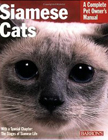
Click on the cover above
to go to this book
at Amazon.co.uk
|

Siamese Cats (Complete Pet Owner's Manual)
Marjorie McGann Collier (Author), Karen Davis Barron's Educational Series; 2nd Revised edition edition (Feb 2006)
ISBN-10: 0764128485
ISBN-13: 978-0764128486
An introduction to Siamese cats which includes information on the history
of the breed, and information on cat care, including health care, as well
as help for people wanting to show their cats. There is also a chapter
on understanding the special characteristics of the Siamese cat, and what
it is like to live with one. This is a good starter book for new Siamese
cat owners, which is well set out and well illustrated. It is a little
short for enthusiasts who are already knowledgeable, but is inexpensive.
 Top
of page Top
of page
|
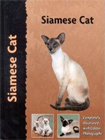
Click on the cover above
to go to this book
at Amazon.co.uk
|

Siamese Cat (Pet Love) [Hardcover]
Denise Jones (Author)
Publisher: Interpet Publishing (17 July 2001) Language English
ISBN-10: 1842860089
ISBN-13: 978-1842860083
Siamese cats have presence. They are very elegant, and look as though they were designed to be painted or photographed. They are long, rather than large cats, with long heads and bodies, and short, sleek coats that show up their fine lines. Their eyes and a piercing blue, and can mesmerise humans. These cats have often been compared to dogs, in that they like to be with their owners and communicate with them, and have even been taken out on leads. Siamese cats know that they are not dogs, however, and tend to treat the family mutt with disdain! These cats like to be up high, so can knock things off shelves. They benefit from an enclosed area in the garden or apartment balcony if they are kept indoors, and like to have objects like tree trunks to climb.
Denise Jones has written a delightful book about Siamese cats, starting with an account of their origins in Thailand and their later popularity in Europe. The book covers the breed's characteristics, as well as all the main aspects of choosing and caring for a Siamese cat. It is well illustrated both with illustraitions to help understand the text, and some lovely 'pin up' shots of Siamese cats.
 Top
of page Top
of page
|
|